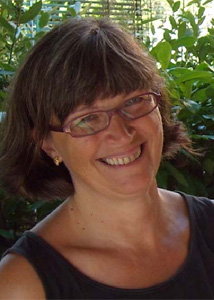Firenze Centre
| Phase OneView Centre Details | Phase Two | Phase Three | |||
| Centre: | Firenze, Italy ( Western Europe ) | ||||
| Principal Investigator: | Dr Elisabetta Chellini | ||||
| Age Groups: | 13-14, 6-7 | Timeframe: | January 2002 to March 2002 | ||
| Sampling Frame: | All public schools in the Florence Area (cities of Firenze, Prato, Campi, Calenzano, Scandicci and Sesto Fiorentino); the same of Phase One. | ||||
Personnel
Professor Annibale Biggeri
Dipartimento Statistico
Università di Firenze
Viale Morgagni, 59
Italy
Roles:
- Phase One collaborator for Firenze
Dr Elisabetta Chellini

Epidemiologist, MD
Unit of Environmental and Occupational Epidemiology
Cancer Prevention and Research Institute (ISPO)
Firenze
Italy
Roles:
- Phase One Principal Investigator for Firenze
- Phase Three Principal Investigator for Firenze
Why Firenze was chosen
Firenze Centre includes 6 Tuscan municipalities (about 713,000 inhabitants), located in Central Italy: Firenze, Calenzano, Campi Bisenzio, Scandicci, Sesto Fiorentino and Prato. The area is characterized by cold winters and hot summers, due to its location, inland in the River Arno’s basin. Firenze Centre participated in two ISAAC Phases: Phase One and Phase Three. Firenze Centre was identified in relation to the presence in the area of an epidemiological study group (the Unit of Environmental and Occupational Epidemiology of the Cancer Prevention and Research Institute) that was responsible for the two cross sectional studies in the area. As well, the definition of the area/population of Firenze Centre was opportunistic in relation to the feasibility to carry out the study in collaboration with the Public Health services of the Local Health Administrations of Firenze and Prato. The opportunity to estimate the prevalence of asthma and allergies and known or suspected risks factors with a standardized procedure allowing comparisons with other areas in Italy and in other countries was considered a good step for further preventive activities.
Our experience in ISAAC
Since the beginning the participation was made possible through SIDRIA (ISAAC Phase One) and SIDRIA-2 (ISAAC Phase Three) study group, an Italian cooperative study group that applied standard ISAAC protocol in Italy. ISAAC questionnaires were translated and validated in the Italian setting. The Italian cooperative study group, that included also the personnel of the Firenze Centre, defined the operational standardized procedure to be applied in all Italian ISAAC Centres, from Northern to Southern Italy. Local funds were used to carry out the first ISAAC Phase, meanwhile the ISAAC Phase 3 was funded by the Italian Minister of Health. We had a high compliance: either the directors of the randomly selected schools either the parents were very compliant and we wish to thank all of them. The self administered questionnaires completed by parents were used since ISAAC Phase One to collect information not only on asthma and allergies histories but also on various known or suspected risk factors for respiratory and allergic diseases (i.e., parental smoking, family history of asthma and allergies, indoor mould and dampness, traffic in the residential areas) in Italian Centres characterized by different climate, latitude and level of urbanization. The results of the Firenze Centre together with the other Italian Centres cooperating in SIDRIA (ISAAC Phase One) and SIDRIA-2 (ISAAC Phase Three) were published in two supplements of an Italian epidemiological magazine: Epidemiol Prev , 1997, 21 (1 suppl) and Epidemiol Prev 2005, 29 (2 suppl). Other scientific papers have been also published on specific aspects, where Firenze Centre data have been pooled with the data of the other Italian Centres. The obtained results have been presented during local congresses too.
In conclusion, the involvement in ISAAC studies was a great occasion for personnel with different expertise (epidemiologists, paediatricians, lung specialists, biologists, environmental specialists, statisticians, youth workers) engaged in different public bodies to work together, in national and international epidemiological studies.
